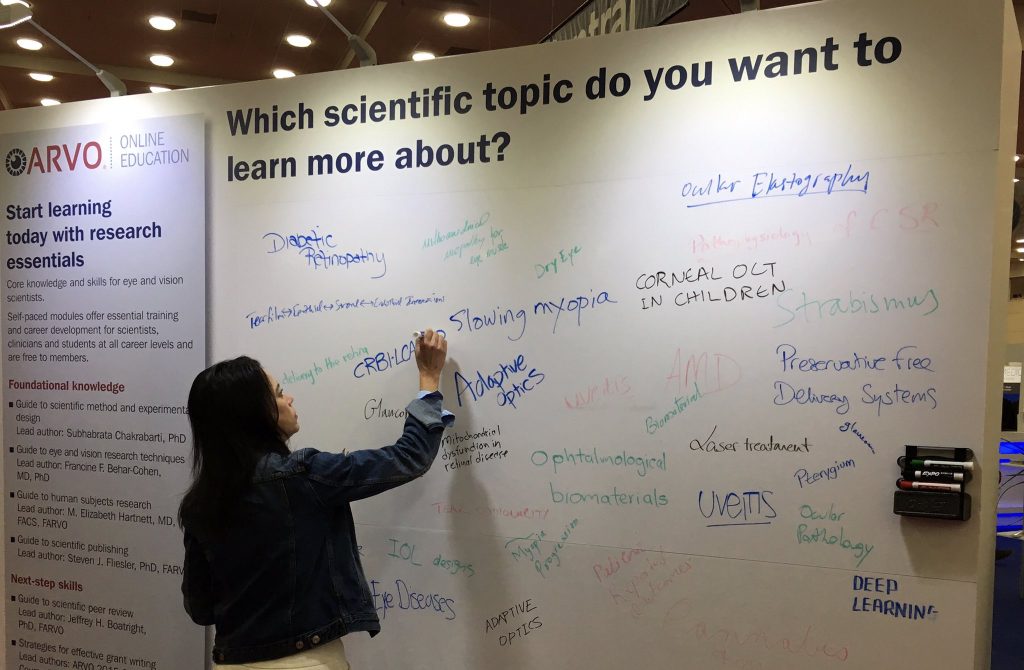The conclusions of more than two years of scientific research presented in Baltimore.
 The final report of DEWS II was presented on 7 May as part of a special session of the ARVO Annual Congress (Association for Research in Vision and Ophthalmology), promoted by the TFOS (Tear Film & Ocular Surface Society), in Baltimore, Maryland.
The final report of DEWS II was presented on 7 May as part of a special session of the ARVO Annual Congress (Association for Research in Vision and Ophthalmology), promoted by the TFOS (Tear Film & Ocular Surface Society), in Baltimore, Maryland.
The objective of DEWS II was to realise a 'consensus' global on the multiple aspects of DED (Dry Eye Disease) and propose an update and upgrade of DEWS I, held 10 years ago.
The new definition of DED reads 'a multifactorial ocular surface disease, characterised by a loss of tear film homeostasis, and accompanied by ocular symptoms in which tear film instability and hyperosmolarity, ocular surface inflammation and damage, and neurosensory abnormalities play an aetiological role (translation by the editor - op. cit. "a multifactorial disease of the ocular surface characterised by a loss of homeostasis of the tear film, and accompanied by ocular symptoms in which tear film instability and hyperosmolarity, ocular surface inflammation, and damage and neurosensory abnormalities play etiological roles.").
The changes to the previous definition of DED make the 2017 version more simplified and suitable for resolving problems of confusion between the diagnostic and pathophysiological aspects of this ocular pathology.
The DEWS II is the result of the work of 150 clinicians, basic researchers and experts from 23 different countries, who worked for more than 2 years, organised in multiple committees and sub-committees.
This scientific initiative is very important since dry eye is a global problem, affecting around 30 million people in the US alone, and is among the most frequent causes for patients to seek medical attention.
Among the most interesting aspects of the new report are the results of the relationship between DED and sexual gender. David Sullivan, chairman of the 'Sex, Hormones and Gender' committee, emphasised that "Hormones are an important factor in dry eye, but they are not the only cause. Dry eye has a higher prevalence in females and Asians, with more symptoms reported by female and young patients. By the way, emphasises Prof. Sullivan "women tend to focus more on maintaining health than on illness and typically have a more proactive attitude towards vision correction"..
From the Subcommittee on Diagnostic Methodology came the suggestion to enrich the diagnostic triage with some questions aimed at determining whether the patient is actually suffering from DED, such as: "How severe is your eye discomfort?" or "How long did your symptoms persist, and what was the triggering event?"
The report on Management and Therapy strongly recommends, once again, avoiding products with preservatives in patients with severe dry eye.
The final DEWS II report (between 400 and 500 pages) will be published in early July on The Ocular Surface and will be made available for download, in several languages, on the TFOS website www.TearFilm.org
Reference
Sullivan DA, et al. Conclusions and recommendations from the TFOS Dry Eye Workshop II. Presented at: Association for Research in Vision and Ophthalmology annual meeting; May 7-11, 2017; Baltimore.
Dr. Carmelo Chines
Direttore responsabile
